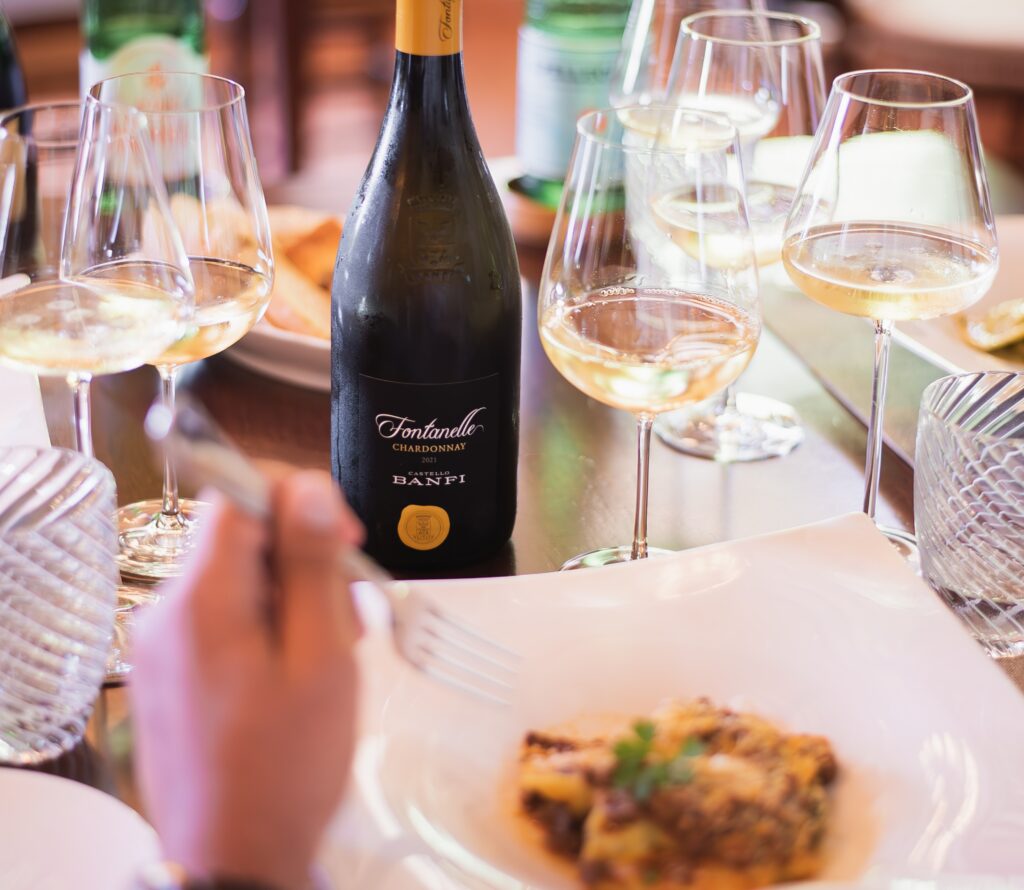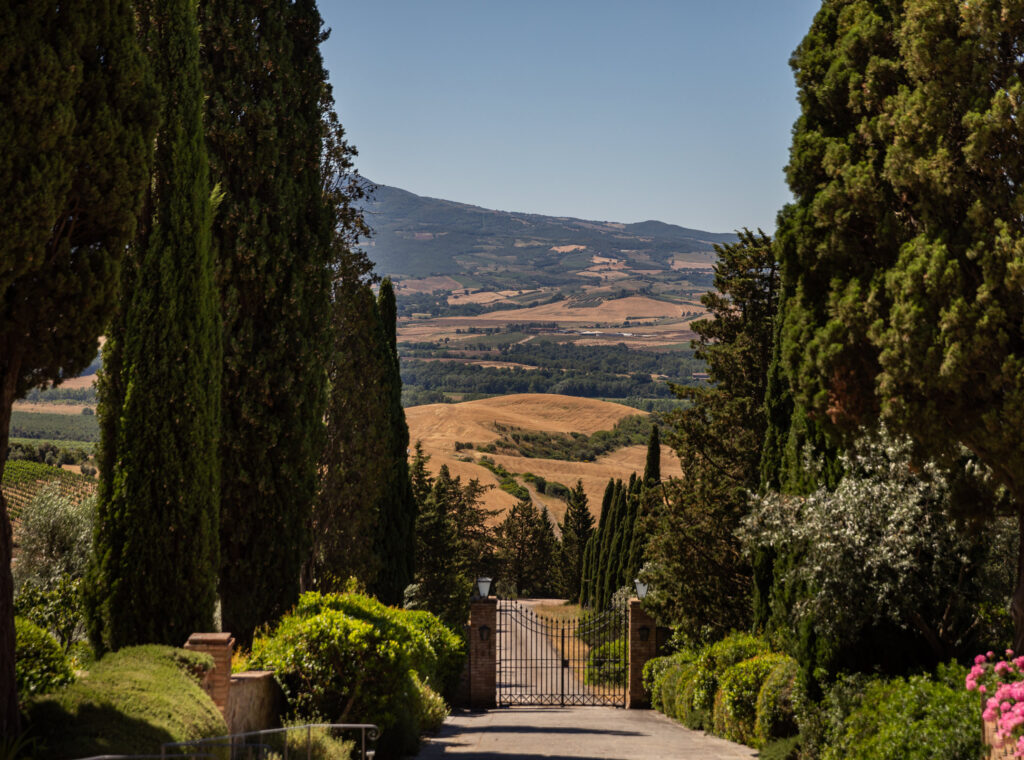Glass productionIts history, processing stages and other curiosities on how glass is made. Find out more about Castello Banfi!
When talking about wine, one cannot fail to refer also to the objects that contain it, in particular bottles or goblets. In fact, in some cases, the expression 'a good bottle' is used to indicate a good wine, while for wine goblets and glasses there is a real classification, since each wine deserves its own type of goblet that best enhances its characteristics.
Glass production: processing steps and other curiosities
To arrive at the production of glass goblets like those used today, a long way has been travelled. Although this material has been used since ancient times, it was not until Roman imperial times that it was systematically used for the production of glasses and bottles.
For those who want to admire the evidence of this long creative and artisanal journey, there is no more fascinating and evocative place than the Bottle and Glass Museum. Located at the Castello Banfi Wine Resort, this museum named after G. F. Mariani houses ancient artefacts and pieces of modern art that bear witness to the various stages in the history of glass production.
History of glass at a glance
Man has been able to work with glass since the 3rd millennium B.C.: in Mesopotamia, glass pastes were used for decorative purposes, while from the 7th-6th century B.C. in Phoenicia and Greece, jars for perfumes and ointments and glass jewellery began to be produced.
As already mentioned, a real glass industry arose in Roman times, around the 1st century AD, when craftsmen began to use the technique of glassblowing (imported from Middle Eastern regions) to make objects more similar to those used today, such as glasses, bottles, oil lamps and in some rare cases window panes.
The golden years of glassmaking in Italy are those of the Middle Ages, when glass was used to make magnificent stained glass windows that still adorn churches and cathedrals throughout Europe, and when the craftsmen of Murano retired to their island to jealously guard the secrets of their glassmaking technique.
Glass production stages
But what is glass made from? What are the substances that form the basis of this material? Glass is an amorphous solid, i.e. with an unordered crystal lattice, and is obtained by the solidification of a liquid, without subsequent crystallisation. In most cases, glass paste is obtained from silicon oxide (SiO2), a material with a very slow crystallisation rate and a relatively high melting point (1,800°C).
Due to the high energy costs of maintaining furnaces at this temperature, it is preferred to obtain glass from other recycled glass, which has lower melting temperatures.
Glass processing stages
Glass processing needs several steps. The first stage concerns the preparation of the materials: the silica sand is sieved and dried (and possibly mixed with other chemical components depending on the finish to be obtained), while, in the case of recycled glass, secondary substances must be separated.
The next stage is melting, which takes place in temperature-controlled furnaces at around 1,600°C. The glass mixture is then cut and directed into a mould.
The third stage is moulding, during which the glass acquires its predetermined shape, such as that of a bottle. The vitrified paste is received by a mould and adheres to the walls, taking its external shape thanks to a pressing action. Blowing then takes place, whereby the glass creations are given their final shape and the empty space inside.
The Bottle and Glass Museum
The ideal place to immerse yourself in the history of glass is, as we said, the Bottle and Glass Museum at Castello Banfi Wine Resort.
The collections of this museum are among the richest in the world, as they span several centuries of history, from the Roman halls to Picasso's glass masterpiece and fascinating Venetian glass.
The layout of the five rooms has been carefully designed to give visitors an immersive and evocative experience, not only because they will find themselves walking through an exceptional location such as the stables and the old oil mill of a medieval fortress, but also because they will be able to follow the evolution of the history of wine glasses in the very land where the best wine is produced: the hills of Tuscany in the Montalcino area.
Museum exhibits
The Roman collection includes glass paste artefacts dating back to the 5th and 4th centuries B.C., blown glass jars and containers for balsams and ointments from the 1st and 2nd centuries A.D., and blown glass bottles and jugs from the 4th and 5th centuries A.D. This is one of the most fascinating and extensive collections, which have recently regained their ancient splendour thanks to restoration work carried out at the San Giovanni Valdarno Glass Laboratory in Arezzo.
The collection of Venetian and Murano glass has been enriched in recent years by two great masterpieces purchased by the Banfi Foundation: a 16th century 'reticello' basket and a large display glass with enamelled brass elements.
Finally, among the modern works of art in glass, one can admire Pablo Picasso's beautiful 'Carrier', a unique testimony to the multifaceted nature of this artist.
About the Museum
The Museum is open all year round, so if you are on holiday in and around Montalcino you will always have the opportunity to visit it and satisfy your curiosity about the history of glass production. From 9 March to 12 November, the rooms are open to the public from 10 a.m. to 7.30 p.m., while from 12 November to 9 March they are open from 10 a.m. to 6 p.m.
Tickets can be purchased at the Enoteca Banfi at a cost of EUR 4, and reductions are available for those entitled.


